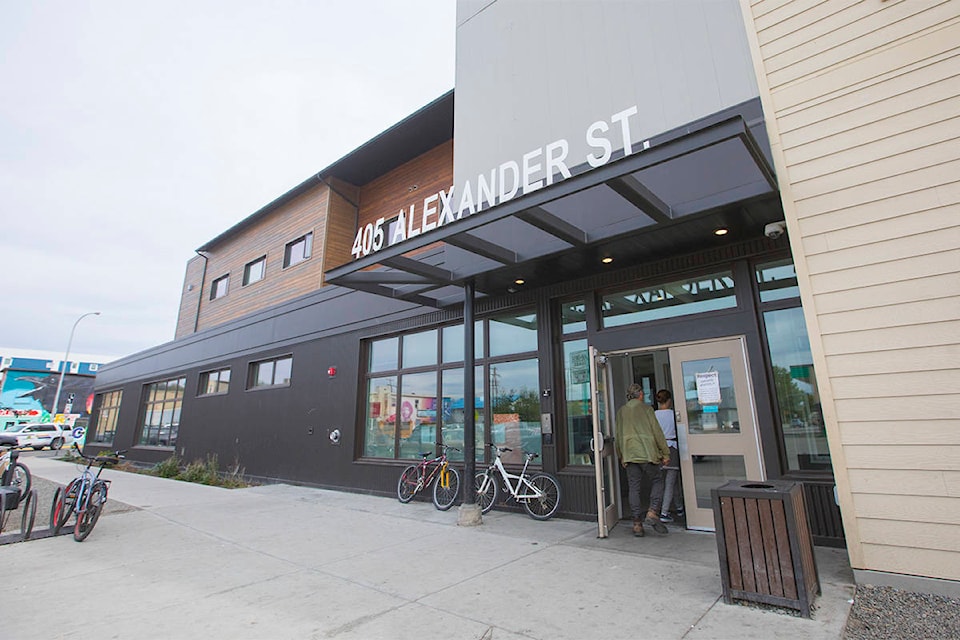In a bid to improve safety around the Whitehorse Emergency Shelter, community safety officers, trained to diffuse volatile situations, could be posted downtown eventually, according to the minister of health and social services.
“We want to make it happen very quickly,” Pauline Frost told the News. “That’s a time sensitive one for us.”
Asked how soon such a program could be rolled out, she said short-term initiatives, which this one falls under, could be introduced as early as the fall.
“I can’t elaborate on that a lot right now,” Frost added.
The potential development is built into other plans for the shelter, first raised in a social media post written by Frost, which calls the state of affairs there “unacceptable.”
Another plan is to expand the block watch program, one that would include staff and clients.
A full-time, on-site EMS worker could be hired in order to stem emergency room visits. An announcement regarding this will be made by the end of the summer, according to the post on Facebook.
When it comes to posting community safety officers downtown, akin to the ones active in Kwanlin Dün and Selkirk First Nations, nothing is finalized.
“Nothing’s moved on it,” said Eileen Duchesne, acting communications manager for the Kwanlin Dün First Nation. “Kwanlin Dün has received the request, we’re looking at it, but no definite decisions have been made yet.”
Frost said there weren’t firm plans for the shelter once the Yukon government assumed control earlier this year from the Salvation Army, noting it’s been community partners that have informed future work at the facility.
Asked what’s happened since the takeover, Frost said that nine clients have been provided with long-term housing; one social worker has been posted at the shelter, along with a housing navigator.
Department spokesperson Patricia Living said programming includes Indigenous language sharing, movie nights, arts and crafts and fishing trips.
Kate White, leader of the NDP, said the ideas outlined in Frost’s informal social media post sound good, but there are no timelines.
“This is a very broad statement that’s very similar to what we heard when the Yukon government initially took over the shelter.”
On the topic of the block watch program, White said it would be “irresponsible” to have untrained clients and staff members entering potentially dangerous situations.
White wants to know which plans will be implemented when students return to Whitehorse Elementary School at the end of the month.
“I want to know what concrete measures are being taken right now so that residents on Alexander Street can sleep with their windows open,” she said.
“The shelter, as it’s going, doesn’t work. It’s something we need to revisit again.”
The shelter is accommodating more people now than it has in the past. Frost said the number of people spending the night has ballooned to 60 people at times.
Christina Sim, director of health and wellness at Kwanlin Dün First Nation, said this is a result of the government reducing barriers to service – a good thing, but services could be stretched thin.
“We’re at a point in time right now where it’s at critical mass and that certainly isn’t the fault of the Yukon government,” she said. “It’s the result of people feeling welcomed at the shelter.”
Sim said it’s not best practice for the shelter to be mixed-use.
“Anyone who is in the business of working with vulnerable populations knows that an emergency shelter, first and foremost, is to be a temporary place for people to sleep. It should not be the central point for a community, which it’s become.”
Asked what needs to change, Sim said a sobering centre should be created.
“We do need in Whitehorse a safe, appropriately placed space that is properly staffed for people to come who have been actively drinking or using, where they can spend time there, they’ve got staff who are supportive, they don’t have to be out on the street when they’re intoxicated,” she said.
Contact Julien Gignac at julien.gignac@yukon-news.com
